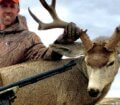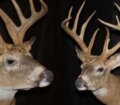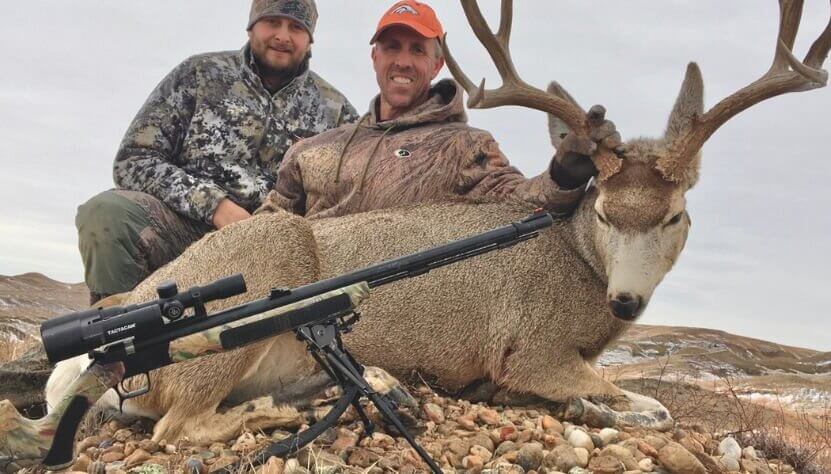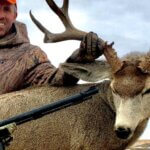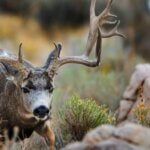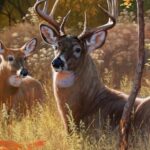Editor’s Note: Keith Pullins of Rapid City, South Dakota, has been hunting mule deer ever since he started walking – for about 30+ years. Pullins has taken over 25 mule deer with his bow and 30+ with his rifle. His best bowhunt mule deer scored 164 on Pope & Young (P&Y).

Mule deer seasons usually go from month to month. The last season is generally a muzzleloader season during December. One year, December 31st, came and went, and I didn’t have a chance to hunt. Although I’d seen quite a few bucks during the muzzleloader season, I hadn’t seen any I wanted to hunt. On December 31st, I called my buddy Domanic Heim and told him, “Well! I guess I’ll eat my muzzleloader mule deer tag this year.” I was surprised when he answered, “You’ve got one more day left to hunt.” I told him, “No, I don’t! Today is December 31st, and that’s when black powder season expires,” to which Domanic said, “Read your license.” Sure enough, my license didn’t end until after January 1st. After I checked my license, I called Domanic back and said, “I can’t believe I have one more day to hunt!”
So, Domanic and I met up the following day on the National Grasslands and went into an area where I’d seen some nice muley bucks earlier in the season. We got to our high point and started glassing, and I spotted this one, a lone, big buck. Once the buck bedded down, Domanic said he would stay on top of the hill and keep glassing the buck as I tried to stalk in close enough to get a shot. I started my stalk and had to circle him to get the wind in my favor, but I finally got within 100 yards of this bedded-down muley. The buck stood up and started walking up the side of the hill where he’d been bedded. I was shooting CVA Optima with a PowerBelt Bullet and 100 grains of powder and had a Vortex Riflescope on my rifle. In South Dakota, we couldn’t use a riflescope with more than 1X magnification during black powder season. However, I missed the buck.
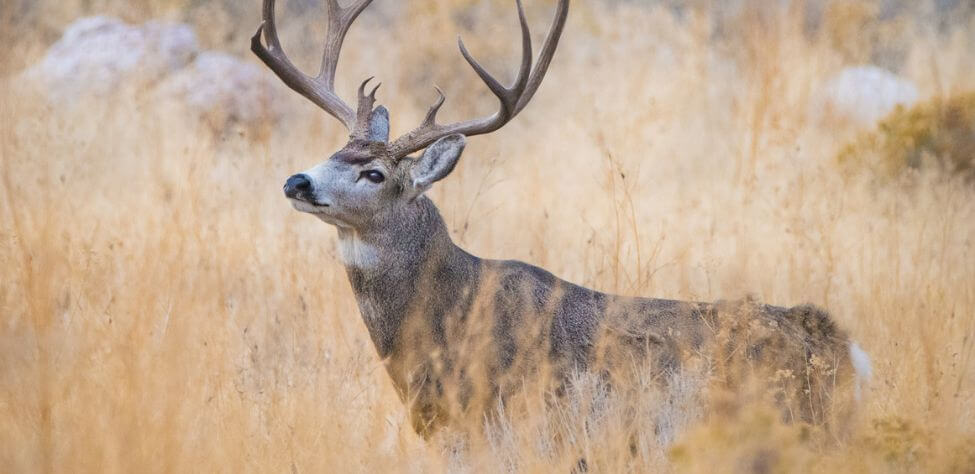
Domanic and I got together, and I said, “I don’t miss, and I sure don’t miss at 100 yards with this
rifle.” I assumed that, riding my rifle around in my truck during the season, my scope must have
lost its accuracy. I aimed at a particular rock on a dirt bank at about 100 yards, and when I
squeezed the trigger, I saw that my shot was about 1-1/2 feet low, so I shot under the
buck. I was heartbroken. I couldn’t believe that on the last day of black powder season, I’d had an
opportunity to take a super-nice mule deer buck and missed him. Bummed out about what had
happened, I told Dominick, “Let’s go back to the truck.”
To get back to the truck, we had to go down an ample drainage. When we were about halfway to the truck, I told Domanic, “I better just go ahead and reload my rifle.” I thought perhaps I’d have a chance to shoot a coyote. About 10 minutes later, we came around a bend in the drainage, and suddenly, this big muley jumped up and started running up the hill. I recognized him as the buck I’d missed earlier. He was circling back toward the exact spot where I’d missed him. I immediately dropped to the ground and set up my bipod, as Domanic said, “160 yards!” I aimed a foot above the buck’s back and squeezed the trigger.
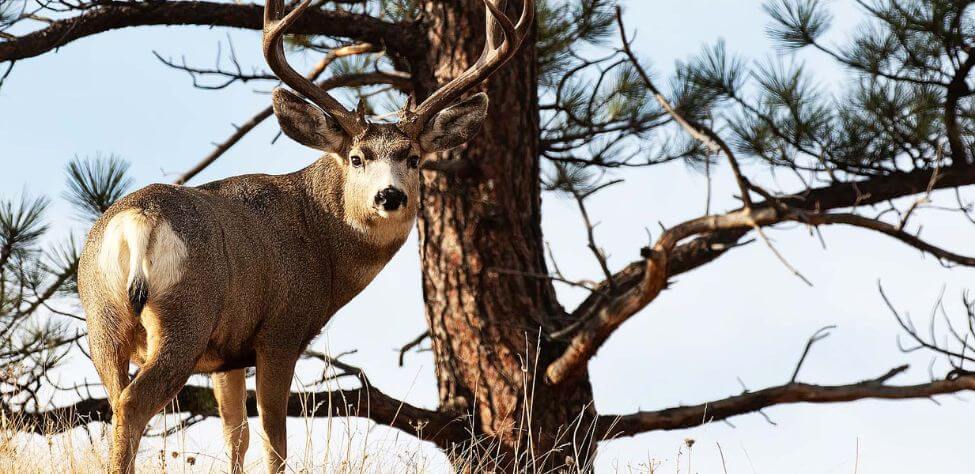
The buck hunched up before running around another corner of the drainage. I said, “I think I hit him pretty good.” We went 100 yards in the direction the buck was heading and discovered him. When I examined the entry hole, I saw I had heart-shot the buck. What amazed me was that when I aimed in that split second, I decided that if I shot a foot over that buck’s back, I should hit him in the vitals. That was precisely what happened. This buck was the third big mule deer buck I’d taken that year.

Tomorrow: Bagging a White Tailed Deer

